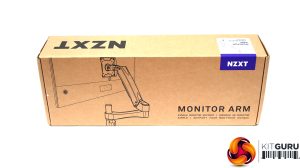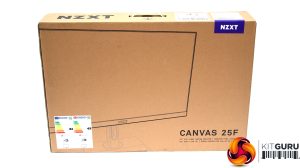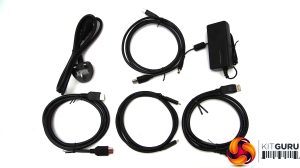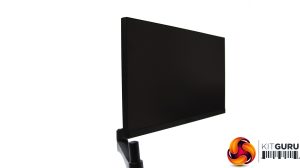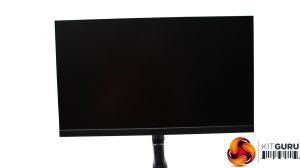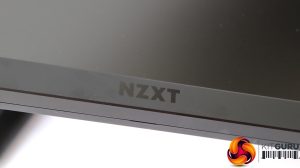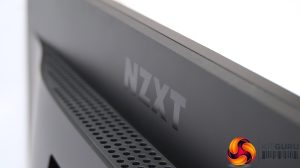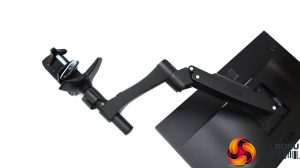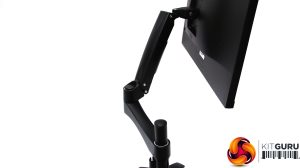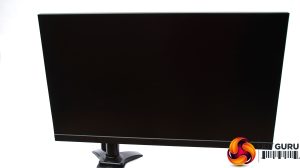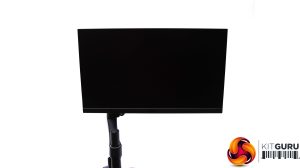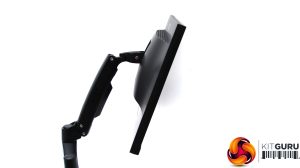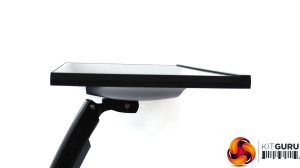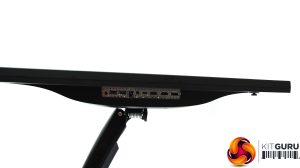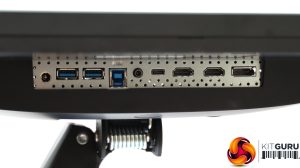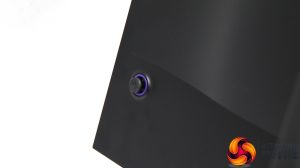The NZXT Canvas 25F comes in a nondescript brown box. The mounting arm is delivered in similarly innocuous packaging.
Inside, there is a UK power cord. There are cables for HDMI, DisplayPort, and USB C, plus an upstream USB cable.
The Canvas 25F has a borderless frame design, which adds a level of sophistication to the appearance. The NZXT logo on the front is so subtle as to be barely noticeable, as is the one on the rear. Whereas the company's chassis have a bit more gaming bling about them, the black version of this screen is very sober indeed. The white version still has a black front, with the white only being on the rear. You can choose a black or white desktop stand whichever monitor style you go for.
The monitor arm is only black, however, and although not ugly, is relatively sober. The package together with the black version of the screen is very serious.
The mounting arm gives you a huge range of tilt, rotation, and height adjustments. The stand clamps firmly to a wide variety of desktop surface thicknesses, and there's a cable tidy built in to ensure your wiring doesn't just flop about behind the panel. The arms are sturdily built, with small screws to lock each section into position, but the various parts feel very secure even without these. Overall, the screen feels very safe on the arm, so long as you clamp the base firmly.
As we were sent the mounting arm, we can't show you pictures of the desktop stand, but with this installed you can adjust height up and down across 120mm, tilt 5 degrees forward or 20 degrees backward, swivel 20 degrees left and right, and pivot 90 degrees into portrait orientation (which you can also do with the mounting arm). You can also take a look at it in our Canvas 27Q review.
All the ports are in one line in the middle of the rear of the Canvas 25F, pointing downwards. From the right, there is a DisplayPort 1.2 connection, according to the specification, but this technically only supports 144Hz at a Full HD resolution, and we managed the full 240Hz with DisplayPort. Then you get two HDMI 2.0 ports, which also support the full 240Hz (we tested this as well), followed by USB Type C, which can act as a video input as well as upstream USB connection. Since this supports DisplayPort Alt, it can display Full HD at up to 144Hz.
However, this USB-C port is not powered, so can't charge your laptop when attached. This is a bit of a disappointment, as a single-cable laptop connection is a compelling feature of USB-C. Next along is a headphone minijack, followed by a Type B port for USB 3.0 upstream. This (or the USB C port) can drive the two USB 3.0 Type A ports. The power connection is on the right-hand end. This monitor uses an external power brick rather than having its AC-DC power supply built in.
The menu system is accessed exclusively via a joystick on the back, placed in the typical position of the bottom right-hand corner as you look at the monitor from the front.
 KitGuru KitGuru.net – Tech News | Hardware News | Hardware Reviews | IOS | Mobile | Gaming | Graphics Cards
KitGuru KitGuru.net – Tech News | Hardware News | Hardware Reviews | IOS | Mobile | Gaming | Graphics Cards


